Last Updated on January 2, 2024 by Matt Greene
*Read our review guidelines.
I'll be real with you and tell you that the best golf balls for beginners in 2024 are second hand golf balls.
If, however, you want to use new golf balls, then we need to find you a ball that will stay in play and give you maximum distance. That's going to help you get better quickly and enjoy the game more.
We've been testing all the golf ball options on the market to help you find the right ball to stay in play so you lose fewer. Our research is the most comprehensive for beginners golf balls and we use our expert knowledge to find the best golf balls for beginners to give you our recommendations.
Best Beginner Golf Balls in 2024
- Srixon Soft Feel golf balls (editor's pick - best golf balls for beginners)
- Kirkland Signature golf balls (best value golf ball in the world)
- Callaway Warbird golf balls (best for maximum distance)
- Titleist TruFeel golf balls (best for new golfer swing speed)
- Volvik Vivid golf balls (hardest golf ball to lose)
- Wilson Tour Velocity golf balls (most popular with beginner golfers)
Srixon Soft Feel Golf Balls
The best golf ball for beginners to move from used balls
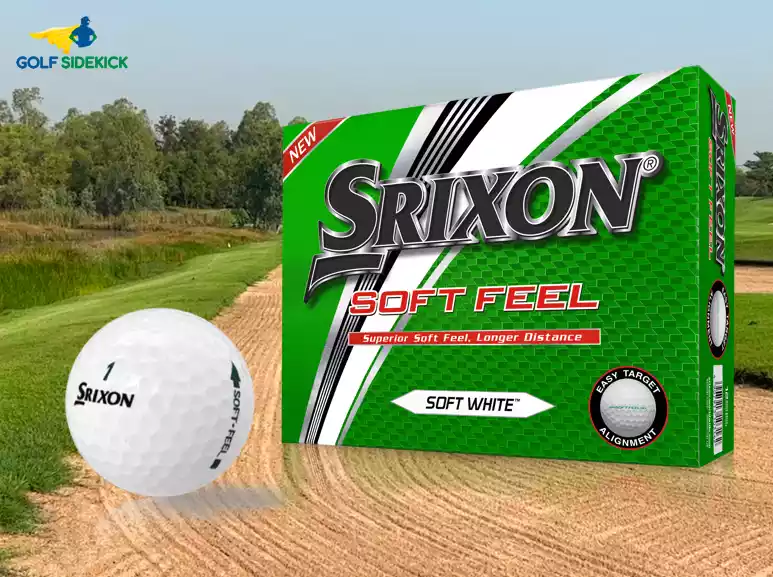
The Srixon Soft Feel is a two piece golf ball that will give you long distance and durability.
Srixon Soft Feel also do not feel hard as a rock.
Whenever someone asks me about a good golf ball for beginners, I'm all in for the Srixon Soft Feel. I've been a fan of these babies since my days as a mid/high handicapper, and even when I got better with a 5 handicap, they still rocked. These are a soft golf ball and give fantastic distance off the tee. You're gonna dig 'em.
Kirkland Signature Golf Balls
Cheap premium golf ball for any golfer even beginners
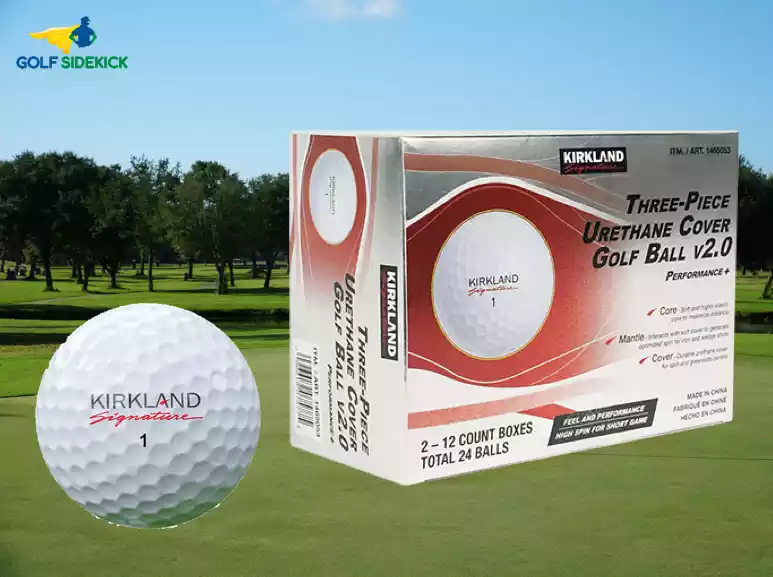
These are premium golf balls that beginners can buy and tee up with confidence. If you lose one, you will not feel bad because they cost around a buck a ball.
You will not find a better value three-piece design with a urethane cover. Why is this important? The ball plays like a professional golf ball you see on TV. The urethane cover is made to spin and feel soft around the greens. This is the only premium designed ball on the list and at the price, it is a must-play golf ball.
Despite the soft urethane cover, the Kirkland Sig is durable and delivers top notch performance even if you use it for 2 rounds.
Where this ball truly excels is in iron-play – it holds greens like a pro Tour ball. I had the pleasure of using these for a couple of months after buying a bunch in the USA and I shot 75 at Pebble Beach with them.
If you're confident in your shot accuracy, this golf ball will give you excellent chipping spin, green side performance and feels very gentle on the putter face for easy putting. If your shots are a bit unpredictable going left and right with big shot shape, you should avoid this ball as the extra spin will make that shape even bigger.
Callaway Warbird Golf Balls
A simple pick for beginners for maximum distance
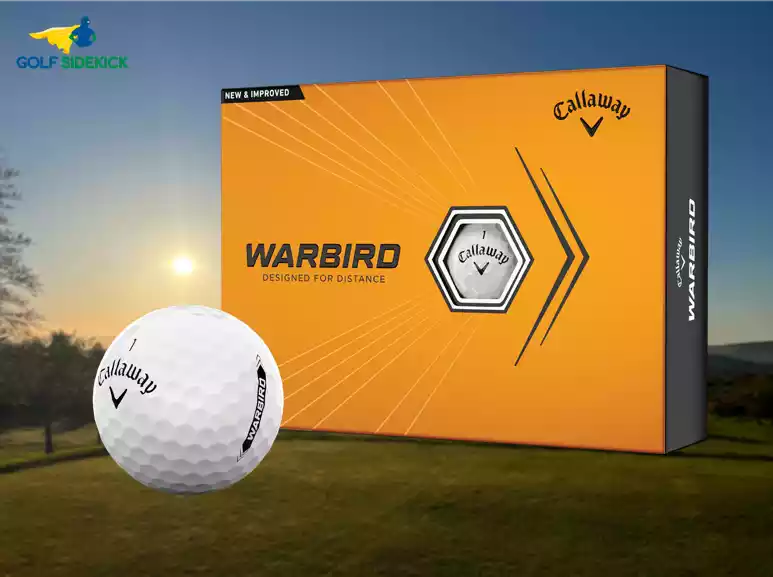
The Callaway Warbird is the best ball for speed and distance for beginners, and this latest version lives up to the reputation.
Warbirds are a two-piece design with a big core under the cover that helps to transfer power from your club into the ball to help elevate your shots. If you're a beginner golfer struggling with getting the ball in the air and then keeping it in the air, this is the ball.
In our testing we noticed much more yardage from the Warbird. Of course, there were just a few extra yards of carry distance but because of the lower spin, the ball rolled out a lot longer than other balls on the course.
Approaching greens, we noticed that the ball does need to roll up and will stop quite a long way from its pitch mark if it lands on the green. Keep that in mind if you decide to game the Wardbird balls.
For green side chipping, you want to allow for a lot of roll out.
Titleist TruFeel Golf Ball
Great overall ball for medium swing speeds
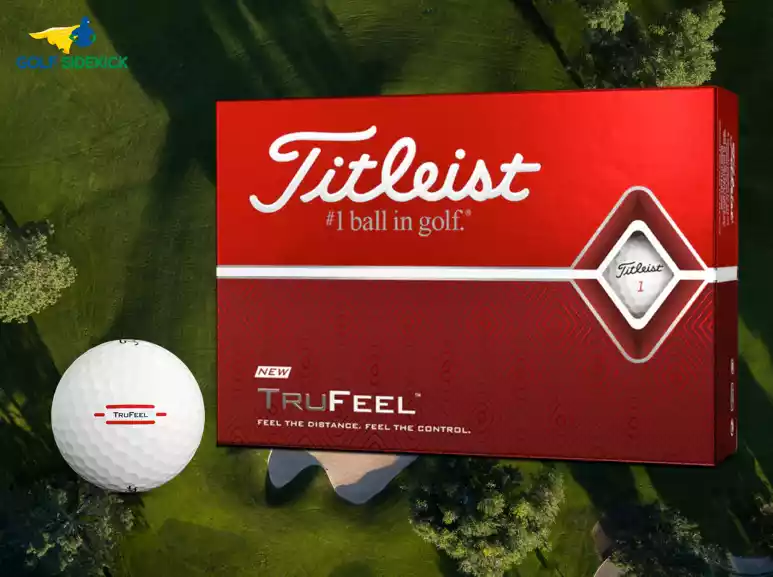
The Titleist TruFeel is one of the softest balls that Titleist make, and is a ball perfect for beginner golfers.
In the beginning of 2022, the TruFlex cover was created for this model and Titleist also created a larger TruTouch core for longer distance. You can hit this ball and not feel like you're hitting a stone.
This latest TruFeel is also much lower spin do when you whack it with your driver, the ball will roll out and fly much further.
When we tested the TruFeel, we noticed that it felt very soft off our wedges and the data backs it up. There was plenty of spin and softness around the green to stop quickly. I would rate this golf ball similar to the Srixon Soft Feel.
Volvik Vivid Golf Ball
Best ball for finding in the rough
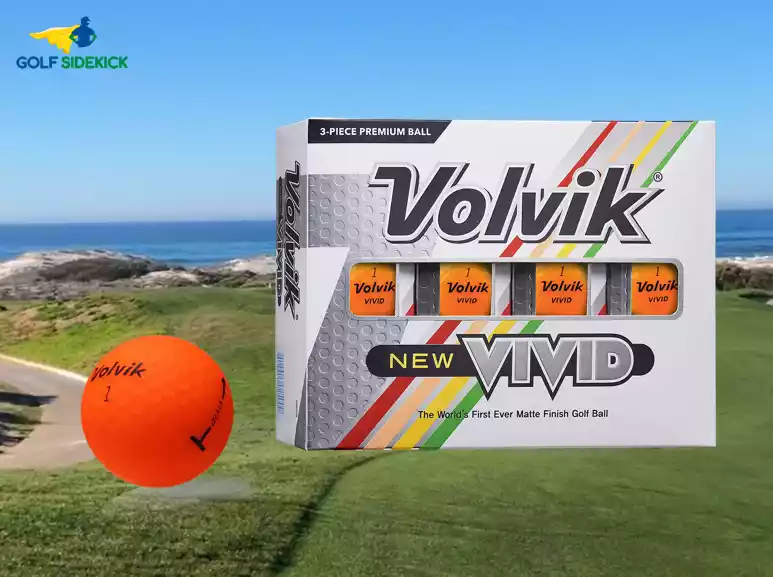
The Volvik Vivid is the brightest golf ball on the market and helps beginners to find the ball mid-air and in the rough.
Tracking the ball in the air as it flies is easiest with the Volvik Vivids and finding them in the rough is easy with the high contrast brightness of the cover.
The ball is very firm but the cover is a matte finish to make it feel quite 'sticky' on your club face. That helps around the greens where the ball has a medium to low spin rate. Off the driver face, you will notice what low spin looks like.
I found that when i hit the Vivid with the driver, the ball seemed to stay in the air a second longer than I expected. It travels far with long roll out thanks to the 75 medium compression. It's really a golf ball designed for beginners swing speeds and accuracy.
There are many colors available from bright orange to green to red and yellow. I would suggest the orange, yellow and green only. Red and blue are tough to see.
Wilson Tour Velocity
Best low compression golf ball for beginners
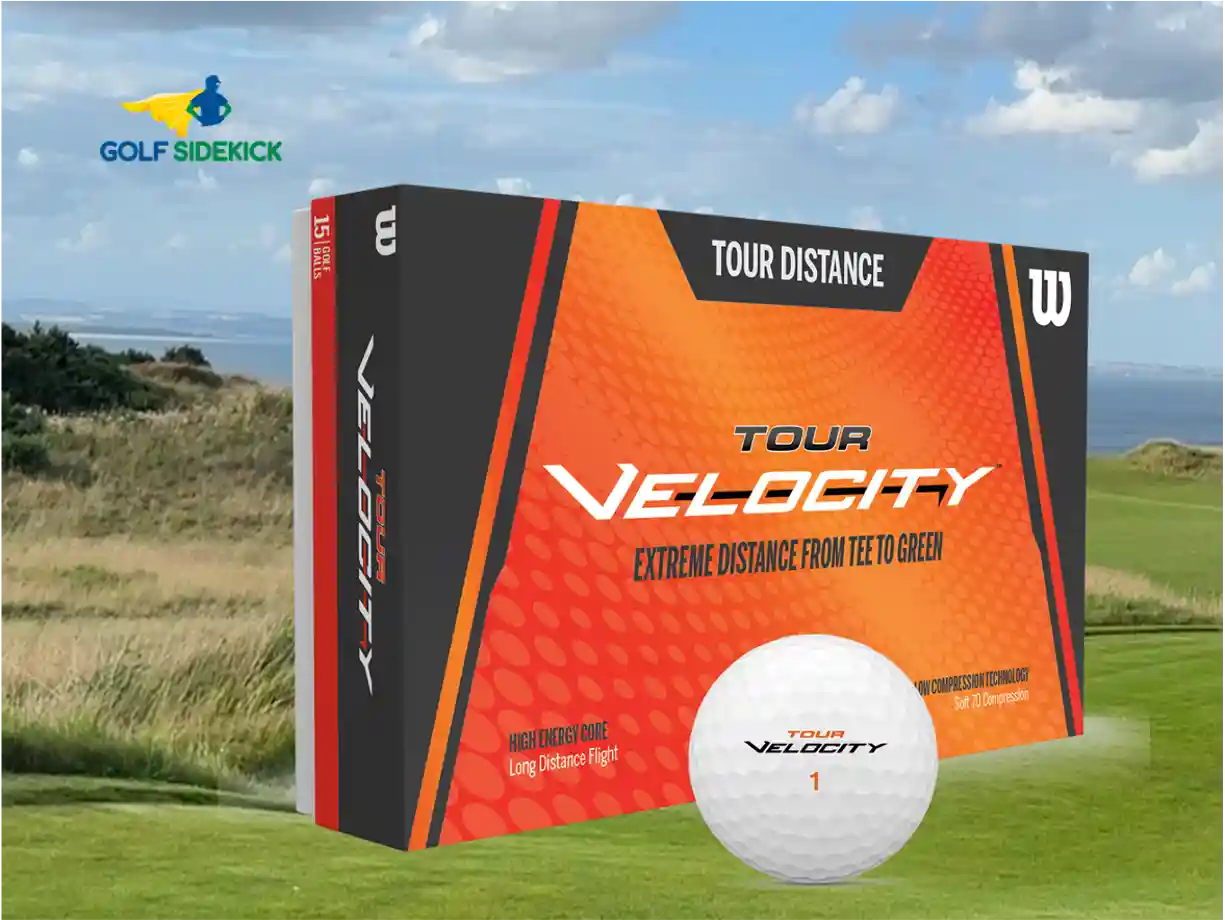
This Wilson Tour Velocity has low-compression inner core and that is covered with a hard ionomer (surlyn) cover material. If you wrap a hard cover around a soft compression golf ball, the main objective is POWER and DISTANCE.
In my testing, we tried low, medium and high swing speed, and noticed for low and medium swings, this ball goes as far as possible. The dimple pattern also helps to get the ball elevated as soon as possible to stay in the air longer. The longer the ball can fly, the bigger the carry distance.
I tested this golf ball with a 28 handicapper friend who just recently started golf. He hit it good distances but the impressive part was how durable the ball was. He hit it into the trees, onto the cart path, in the street and the ball held up well. You could use one ball for 4 rounds if you didn't lose it.
Make no mistake, the Tour Velocity is a distance golf ball so around the greens, you will need to account for more roll out. If you paired this golf ball with low spinning chipper clubs, you will see impressive results for your short game.
Keep in mind that this ball is very hard on the outside so it will feel firm on your putter. It is made for distance only and at less than $20 a dozen, we don't see any downside.
Do golf balls make a difference for beginners?
Yes, golf balls do matter for you as a beginner, partially in terms of performance of the ball on the course, but also mainly for your mental performance as a new golfer avoiding fear and dread. The mental side of golf balls is not spoken about enough for beginners.
Here are some key factors about the golf ball you use that influence your game as a newbie:
Distance
The right golf ball that has been designed for distance can help you as a beginner start reaching the green in regulation or regulation-plus-one. So on a par 4 or par 5 you could get near the green in 3 or 4 shots.
The balls in this article are designed to go LONG. Once you gain experience, you can look for more premium golf balls when you want to dial in your control instead of distance.
Spin and control
Balls that spin too much can reduce your distance and if you hit the ball sideways, the increase in spin can accentuate that sideways movement.
Low spin golf balls like the ones in this article can help to straighten out your flight and prevent lost balls.
Cost
As a beginner, you should always find the cheapest, best value option.
In my opinion, the best option is second hand cheap golf balls that you can bash and not care about. That is where the beginning of confidence comes from. If you grow fearful of losing balls, you hit worse shots. If you learn to take free swings without worrying about the golf ball getting lost, you will carry that confidence into the future.
The bonus of the big old bags of second hand balls is that you can get a wide range of models and makes. You will start to prefer one or two or three models and that can be your starting point for your new ball purchasing adventure.
Confidence
Confidence is a the biggest weapon you can have in golf. From confidence, you can try new things, hit the ball better and feel better on the course. If you use golf balls that you are afraid of losing because of cost, or you use a golf ball that is designed for a Tour pro, you will stunt your confidence growth.
You want to always use equipment, from balls to drivers, to irons and woods and wedges that give you maximum confidence. Your ego will grow in golf, I promise, and then you can look at equipment designed for specific purposes. For now, build your confidence by simplifying everything in your game to beginner friendly gear like on my website.
Progression
Starting with the best beginner golf balls can make you value a better golf ball later in your career. I remember when I moved form Pinnacle Extreme (VERY HARD) to Srixon Soft Feel (medium) to Maxfli Revolution (soft) as I got better and better.
If I started with the premium Maxfli, I would not have enjoyed the good feelings of moving from one ball to another as I got better!
Enjoy the ride, and start simple.
Worst golf balls for beginners
The worst golf balls for beginners are expensive, tour quality golf balls such as Titleist Pro V1, Callaway Chrome Soft and TaylorMade TP5 (unless they are cheap second hand).
Tour quality golf balls have been designed to spin a lot, and you need a high level of skill to use them. Without the necessary skill, the premium balls will actually be worse for a beginners game. High spin urethane balls will fly further left and right than the cheaper, 2 piece golf balls.
Losing balls as a beginner is common and when you lose a $4 or $5 golf ball, you dread hitting more shots because you don't want to waste more money every time a ball flies into the water or OB. That is not the way to have maximum fun. Buy cheap balls that you can accept losing and you will keep playing this game for a long time.
How many golf balls should you take for 18 holes?
Beginner golfers should take as many golf balls to the course as can fit in their bag. I would recommend taking 2 balls per hole as a beginner so a total of 36 balls for 18 holes or 18 balls for 9 holes. You can lose a lot at some golf courses, so it's better to be prepared.
I highly recommend buying a huge bag of 72 golf balls second hand and hacking away at those at the early stages of your golfing career.
Conclusion: What are the best golf balls for a beginner?
The best golf balls for beginners are the Srixon Soft Feels or the Callaway Warbirds.
I would recommend always looking for second hand ball deals. They are everywhere on Amazon or eBay. From there, you will experience many kinds of golf balls and you'll get a feeling from the second hand ones, which you prefer.
Seek advice, practice, and stay within your budget. Remember that golf is a journey – enjoy the process of learning and improving on the course.
